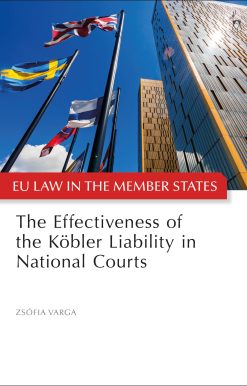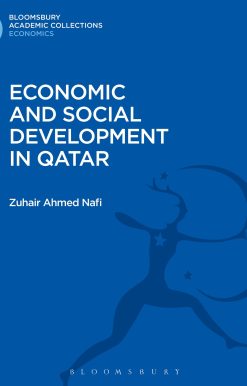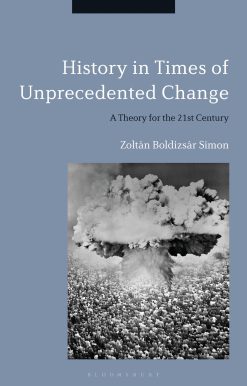Unsettled Ground: The Whitman Massacre and Its Shifting Legacy in the American West
19.00 JOD
Please allow 2 – 5 weeks for delivery of this item
Add to Gift RegistryDescription
A highly-readable, myth-busting history of the Whitman Massacre—a pivotal event in the history of the American West—that includes the often-missing Native American point of view. In 1836, Marcus and Narcissa Whitman, devout missionaries from upstate New York, established a Presbyterian mission on Cayuse Indian land near what is now the fashionable wine capital of Walla Walla, Washington. Eleven years later, a group of Cayuses killed the Whitmans and eleven others in what became known as the Whitman Massacre. The attack led to a war of retaliation against the Cayuse; the extension of federal control over the present-day states of Washington, Oregon, Idaho, and parts of Montana and Wyoming; and martyrdom for the Whitmans. Today, however, the Whitmans are more likely to be demonized as colonizers than revered as heroes. In Unsettled Ground, historian and journalist Cassandra Tate takes a fresh look at the personalities, dynamics, disputes, social pressures, and shifting legacy of a pivotal event in the history of the American West. “[Tate] tells the Cayuse’s side of the story with empathy and clarity . . . a meticulously researched book.” —The Seattle Times
Additional information
| Weight | 0.49 kg |
|---|---|
| Dimensions | 2.77 × 14.99 × 22.31 cm |
| PubliCanadanadation City/Country | USA |
| by | |
| format | |
| Language | |
| Pages | 304 |
| publisher | |
| Year Published | 2020-11-17 |
| Imprint | |
| ISBN 10 | 163217250X |
| About The Author | CASSANDRA TATE is a Seattle-based writer and editor. A former journalist, she earned a Ph.D in American history at the University of Washington in 1995. She is the author of Cigarette Wars: The Triumph of "The Little White Slaver." Her work has been published in Smithsonian, Columbia Journalism Review, and other national magazines, and she has contributed more than 200 articles to HistoryLink.org, the online encyclopedia of Washington State history. She is a former Nieman Fellow at Harvard University. |
Washington State Book Award Finalist“Unsettled Ground is both the gripping adventure story of a cross-continental journey and a cultural exploration of the collision of two very different ways of life. . . . Told with depth and insight, Tate’s account is a prism that allows us to see the multiple dimensions of a classic frontier conflict.”—Peter Stark, author of Astoria: John Jacob Astor and Thomas Jefferson’s Lost Pacific Empire“I consider Unsettled Ground one of the most important Northwest history books ever written.”—John Hughes, Chief Historian, Washington Secretary of State “Even well-read aficionados of Western history will be surprised and perhaps dismayed by Tate’s comprehensive and masterfully layered narrative.”—Shannon Applegate, author of Skookum: An Oregon Pioneer Family’s History and Lore and Living Among Headstones: Life in a Country Cemetery “In this overdue era of righting unbalanced histories, Cassandra Tate reexamines a deadly tragedy from the nineteenth-century American West. Unsettled Ground is a riveting blend of intricate research, fresh cultural perspective, and first-rate storytelling.”—Dave Boling, author of Guernica and The Lost History of Stars“….by turns moving, evenhanded and lyrical in its evocation of time and place.”—Seattle Times"In this moment when we as a nation grapple with systemic racism and injustice, Unsettled Ground is a timely book."—Pacific Northwest Quarterly"A highly readable, myth-busting, fact-based story. [A] tale for all who love the West, its history and its truths."—The Inlander"Balanced and deeply researched."—Crosscut |
|
| Excerpt From Book | Marcus Whitman was a Protestant missionary who might have beenonly a historical footnote had not he, his wife Narcissa, and elevenothers been killed by Cayuse Indians during an attack on his missionnear present-day Walla Walla, Washington, in 1847. Instead, hebecame one of the most memorialized figures in the Northwest. Acounty, a college, a national forest, half a dozen public schools, andnumerous other enterprises—from an upscale hotel in Walla Walla toa church in Des Moines—carry his name. The Washington legislatureonce considered a measure to rename the iconic Mount Rainier inhis honor. His former mission is a National Historic Site. His statuestands in the National Statuary Hall in the Capitol Building inWashington, DC, nine feet of gleaming bronze on a seven-ton blockof polished granite, depicting a muscular, buckskin-clad frontiersmanwith a ripped torso and linebacker thighs. He appears to be stridingresolutely along an unbroken trail, one foot higher than the other,buckskin fringe and kerchief flying, a Bible in one hand, saddlebagsand a scroll in the other. His strong jaw is neatly bearded, his flowinglocks topped by a beaver-skin hat. If the National Statuary Hall had ahunk contest, he’d be the winner, hands down.The statue embodies Whitman’s place in the mythology of theWest, not the realities of his life. The only feature that can be verifiedas historically accurate are the saddlebags, which were copied from apair used by Whitman when he was an itinerate physician in upstateNew York. He left them behind when he was appointed a missionaryin 1835. They ended up a century later in the collections ofthe Presbyterian Historical Society in Philadelphia. Sculptor AvardFairbanks, who was commissioned to create the statue in 1950, studiedthem when he was designing what is otherwise a fanciful depictionof Marcus Whitman. Even the quotation carved into the granitepedestal—“My Plans Require Time and Distance”—is a paraphraseof something Whitman wrote, not his exact words.The bronze Whitman was unveiled on May 22, 1953. More thanthree hundred people attended the ceremonies, including most ofWashington State’s congressional delegation, dozens of other dignitaries,four distant descendants of the Whitman family, and one dove,who flew in through a window and fluttered around throughout theservices.1 Supreme Court Justice William O. Douglas, a graduate ofWhitman College in Walla Walla (and eventual liberal icon), gavethe main dedication speech. He described Whitman as a “dynamicman of boundless energy” who “brought thousands into the regionbeyond the old frontier.” Like most of the other speakers, Douglasemphasized Whitman’s role in promoting the settlement of the Westby whites, praised his vision and fortitude, called him a martyr, anddeplored the “treachery” of the Indians who killed him. Washingtongovernor Arthur Langlie was unable to attend but sent word that “itis a privilege for the citizens of Washington . . . to offer to the peopleof the United States this visible monument to one who lived humblyand died nobly in pursuit of happiness and freedom for his fellowmen.” Langlie said that Whitman had made “tragic sacrifices,” hehad “died a martyr,” and “America honors itself by honoring him.”The story of the “Whitman Massacre” was a standard part ofthe curriculum for schoolchildren throughout the Northwest in the1950s. I was introduced to it as a sixth-grader in Seattle. It was asimple tale, with sharply defined heroes and villains and thrillingtouches of mayhem and gore. Marcus and Narcissa Whitman werebrave, noble pioneers who came west to “save” Indians. It was neverclear to me what the Indians were being saved from, or whether theywanted to be saved, or what they thought about the missionaries,or why they attacked the mission, but they were not the focus ofthe story that we were told. The emphasis was on the white people.Marcus was strong and handsome; Narcissa was beautiful and saintly;they were “massacred” by brutal, ungrateful “savages.” I was left withan indelible image of Narcissa’s long, white throat being slashed by aknife, sending a river of blood down the front of her billowing gown.Actually, she was shot, but memory and story and history andfact have a fluid relationship. Heroes rise and fall to the rhythms ofwhat scholars call “the politics of memory.” New facts are revealed,old ones dissected, and stories reshaped (and sometimes forgottenaltogether) as political and social conditions change. The initialnarrative, or “memory,” about the Whitmans—as told by whites—emphasized their religiosity. It reflected the evangelical values ofdominant voices in the mid-nineteenth century, a time of intensereligious revivalism in the United States. By the end of the century,after two major economic crises and associated social and politicalupheavals, a new version of the story had emerged. Grounded in nostalgiafor an idealized past, it celebrated the Whitmans as heroic pioneerswho had helped a young, expansionist nation realize its dreamsof Manifest Destiny. A competing narrative, one that included thevoices and perspectives of the Cayuse and other indigenous peoples,began to develop in the late 1960s. Books such as Dee Brown’s BuryMy Heart at Wounded Knee and films such as Soldier Blue and LittleBig Man helped foster public interest in uncovering the history of theWest from Indian points of view.In the 1980s the National Park Service, which operates theWhitman Mission National Historic Site, stopped commemoratingthe annual anniversary of the attack on the mission; redesigned itsdisplays to give more attention to the Cayuse and a more balancedassessment of their interactions with the Whitmans; and phased outuse of the word “massacre” in favor of more neutral language. Theword appeared five times in a four-page brochure distributed by thePark Service in the late 1950s. In contrast, it was not used at all inbrochures available in 1997, the 150th anniversary of what insteadwas called the Tragedy at Waiilatpu. Today the tendency is to see theIndians, not the missionaries, as the martyrs.We seem to live in a binary world, where the lines between goodand bad are clearly drawn, without much room for nuance. For morethan a century after their deaths, Marcus and Narcissa Whitman werevenerated by non-Indians as heroic pioneers who had given their livesto bring Christianity and “civilization” to the West. In more recentyears, however, they’ve been demonized as cultural imperialists andagents of genocide. They received too much credit in the first instance,and too much blame in the second. They were complicated, imperfectpeople: idealistic but culturally arrogant, courageous but inflexible;and it was the way they died, more than what they did in life, thatguaranteed them a place in the history of the Northwest.The Whitmans left comfortable homes in upstate New Yorkin 1836 to become missionaries in what was then called OregonCountry—a vast region (consisting of the present-day states ofWashington, Oregon, Idaho, and parts of Montana and Wyoming)that relatively few Americans had ever seen. They were joined byanother missionary couple, Henry and Eliza Spalding. They reachedtheir destination after an arduous, seven-month, three-thousandmilejourney. Narcissa and Eliza were the first women known to havecrossed the continent from coast to coast. They traveled much of theway on horseback, riding sidesaddle.Whitman established a mission on Cayuse land at a place hethought was called Waiilatpu (pronounced “way-EE-let-pu”). HenrySpalding picked a site 120 miles to the northeast, at Lapwai, amongNez Perce Indians in present-day Idaho. Relations between theWhitmans and their hosts were initially cordial, but disappointmentand disillusionment built up over time, on both sides. The Whitmansexpected the Cayuse to be eager to convert to Christianity, take upfarming, and live like white people. The Indians were interested insome aspects of the newcomers’ culture and religion but only to supplement,not replace, their traditional beliefs and way of life. Longsimmeringtensions erupted in violence on November 29, 1847,ending with the deaths of the Whitmans and eleven other Americans.The attack was a pivotal event in Northwest history. One immediateeffect was the passage of a long-delayed bill establishing theTerritory of Oregon, a measure that extended federal authority overthe region. The bill had been stalled for more than two years by adebate over whether slavery would be permitted in the new territory.In the end, it was not. Meanwhile, the superintendent of Indianaffairs issued an order declaring that the Cayuse had “forfeited” theirrights to their ancestral homelands. He encouraged settlers to fileclaims to Cayuse lands and stipulated that the claims would not beundercut by any future treaties with the Indians. The “massacre”became a rallying cry for a two-year war of harassment and retributionagainst not only the Cayuse but any Indians suspected of beingallies of or sympathetic to the Cayuse. Finally, in the spring of 1850,five Cayuses surrendered to the territorial government in OregonCity and were hanged, after a brief, cursory trial.The Whitman story was burnished and romanticized forgenerations after their deaths, at least in the version told by non-Indians, but it has now largely faded from public memory. AlthoughWhitman retains his place in the National Statuary Hall—at leastas of this writing—and his name remains attached to monuments,plaques, and highway signs from upstate New York to the Northwestcoast, many people don’t know who he was.This book takes a new look at the Whitmans, the Cayuse, andthe shifting legacy of the events at Waiilatpu. One of my goals isto slice through the myths, lies, and misconceptions that have builtup around the story over the past 170 years. Narcissa Whitman didnot have her throat sliced, as I once imagined. She was not scalped,as Richard Neuberger, then a young freelance writer and later a USsenator from Oregon, reported in 1938, in particularly lurid prose(“Narcissa’s blond scalp eventually dangled against the greasy thighof a Cayuse warrior”).3 She was not “shot a dozen times . . . menwhipping her laid-bare back while she was still breathing,” her head“a cracked melon,” as in a scene conjured by an Idaho writer in2019.4 Marcus Whitman did not convince the US government tofend off British claims to the Northwest and thereby “save” OregonCountry for American settlers. The Cayuse attack on the WhitmanMission was not unprovoked.The key figures in this tale were neither heroes nor villains butsimply human beings, caught in a web not entirely of their making.Their lives played out in ways that profoundly shaped the history ofthe Northwest and continue to influence it to this day. What followsis, to the best of my research and knowledge, an evenhanded accountof what happened and why, and how the narrative changed with eachnew generation of storytellers. It’s a complex tale of arrogance, fortitude,naïveté, and misunderstandings. It can be seen as a singularAmerican tragedy but also as representative of the tangle of culturalmyopia and conflict that marked each wave of American incursioninto the West.My dissection of the story begins with the incident that wrappedMarcus and Narcissa Whitman in a cloak of martyrdom and puttheir names in the history books and on the roadside markers: theNovember 1847 attack at Waiilatpu. |
Only logged in customers who have purchased this product may leave a review.






Reviews
There are no reviews yet.